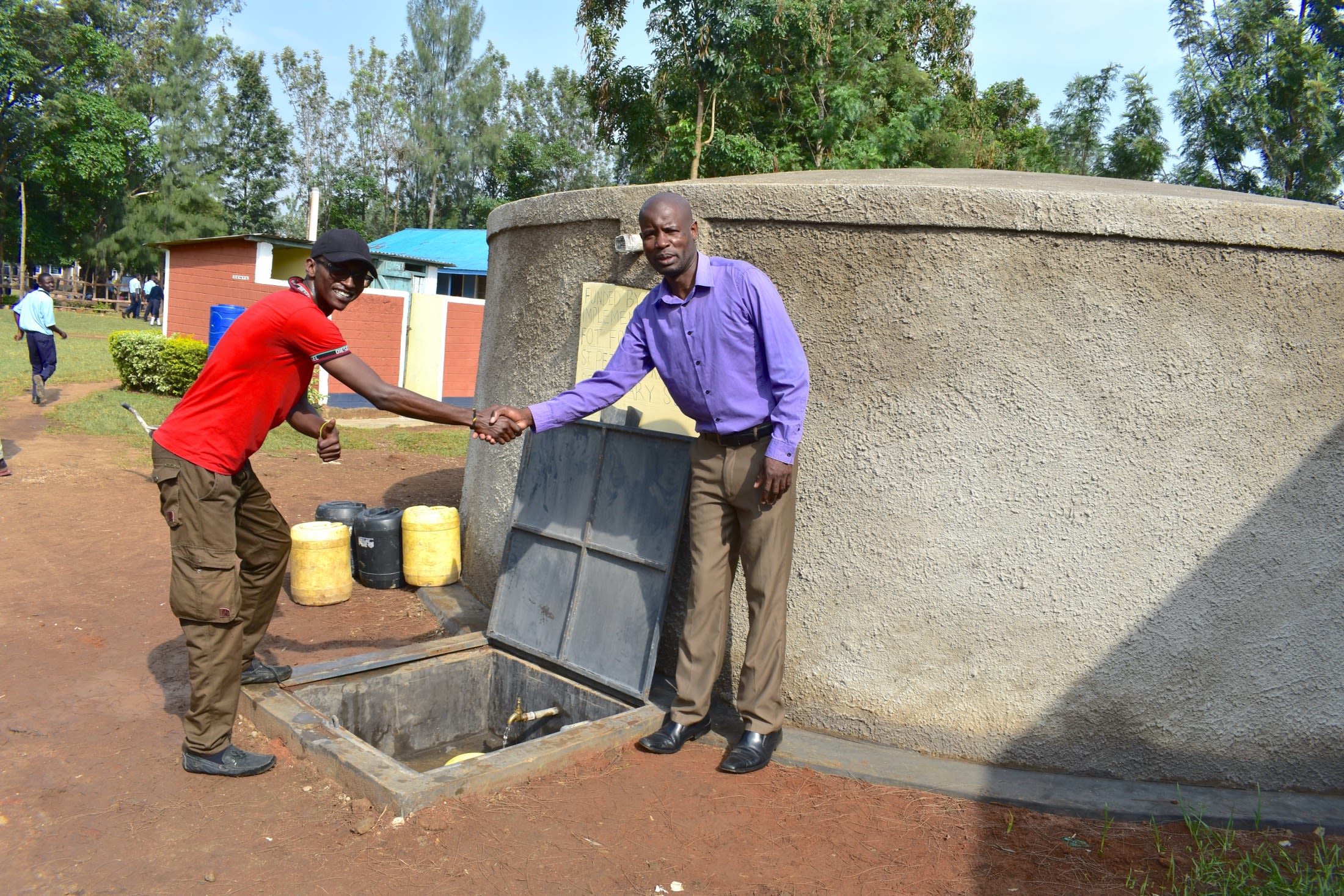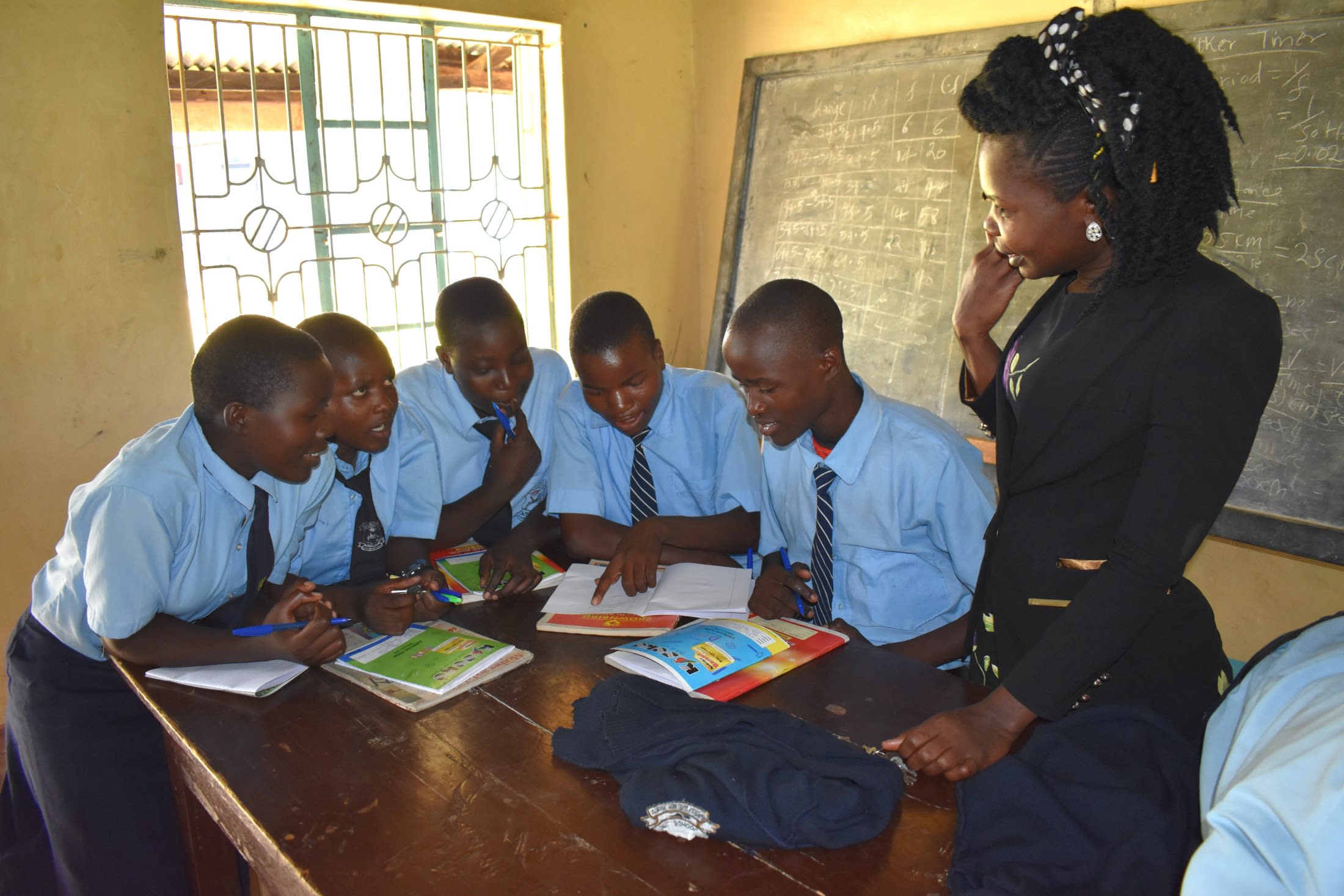St. Peter's Khaunga Secondary School was established in 2003 by the Anglican Church of Kenya and currently serves 330 students. They are taught and supported by 24 teachers and staff. The school is located in a peaceful, rural area that is highly vegetated. That, however, is where the simple story of this school ends and their complicated struggle to find a reliable water source begins.
The school initially used to get water from the nearby primary school's well, but that dried up leaving the secondary school with the choice of either digging their own well or asking students to bring water from home.
They chose to dig, but after getting just 25 feet deep, they encountered bedrock which prevented them from going any further. They stopped there and covered the hole, knowing this was not deep enough to provide sufficient water for their school. Next, they identified a second place to try digging a well, but they encountered bedrock again and resolved to stop digging.
Now, when it rains the second well gets some water, but after fetching just 80 liters it dries up again. The water from this well is now used by the school cows for drinking due to its poor quality and low volume.
The school then identified a parent who has 2 children in the school and who had trouble paying their school fees. The administration decided that if this man could deliver water to the school every day, they would pay him for half of the water's value and use the remaining half to settle his children's school fees.
The school, however, is not aware of where he gets the water and because of that, the teachers do not drink it. Instead, they buy bottled water which the principal confessed to be straining their budget a lot.
At one point, after students kept complaining about stomachaches and it forced the school to take them to the dispensary to ascertain the cause of their illness, it was discovered that the water they had consumed was not safe. Some of them were diagnosed with typhoid. From there they advised the kitchen staff to ensure that the water is boiled before kitchen use, but they cannot afford to spare the fuel to do the same for the drinking water.
Finally, there is a small, 5,000-liter plastic rain tank on campus. But even still, the school runs out of water.
"It is very expensive getting the water to run the school programs. As the school head, I am straining to ensure that the school operates on the water that is bought. When the students complain that the water is not enough, it affects me psychologically and I feel I am not doing enough to provide the school with water," said Principal Mr. Rothe Wakhisi.
Due to the expense and scarcity of it, all water the school can get is prioritized for drinking and cooking. As a result, the latrines cannot be cleaned effectively. The cooks do not get enough water to clean up the utensils or to clean and cook food thoroughly. When the parent supplying the water is sick of unable to make a delivery, the school programs are disturbed because assigning a new water vendor takes time, disrupting the normal school routine. All of the money currently spent on water is meant to be invested in other development projects on campus, but water is always at the top of the priority list.
"Because of the lack of enough water, the classes are not cleaned well. Most students sneeze while in class [from the dirt]. Some days the latrines are not cleaned well due to the lack of enough water in the school. This makes some students afraid to visit the latrines, hence suffering silently in class," said Maureen, a 16-year-old student.
What we can do:
Rain Tank
A 75,000-liter rainwater catchment tank will help alleviate the water crisis at this school. The school will help collect the needed construction materials such as sand, bricks, rocks, and water for mixing cement. We will complement their materials by providing an expert team of artisans, tools, hardware, and the guttering system. Once finished, this tank will begin catching rainfall that will be used by the school’s students and staff for drinking, handwashing, cooking, cleaning, and much more.
We and the school strongly believe that all of these components will work together to improve standards at this school, which will help lead to better student academic performance and will help unlock the opportunity for these students to live better, healthier lives.
Handwashing Stations
There is currently just 1 handwashing station for students to use after visiting the latrines and before eating lunch.
The student health club will oversee the 2 new handwashing stations we will provide, and make sure they are kept clean and in working condition. The club leaders will fill the handwashing stations with water daily and make sure they are always supplied with a cleaning agent such as soap or ash.
VIP Latrines
2 triple-door latrine blocks will be constructed with local materials that the school will help gather. 3 doors will serve the girls while the other 3 will serve the boys. All of these new latrines will have cement floors that are designed to be easy to use and to clean. And with a rain tank right on school property, there should be enough water to keep them clean.
Training
We will hold a 1-day intensive training on improved hygiene, health, and sanitation habits at this school. Our team of facilitators will use a variety of methods to train students and staff, including participatory hygiene and sanitation transformation (PHAST) and asset-based community development (ABCD). We will initiate a child-to-child (CTC) student health club, which will prepare students to lead other pupils into healthy habits at school and at home. We will also lead lectures, group discussions, and provide illustrative handouts to teach health topics and ways to promote good hygiene practices within the school. We will then conduct a series of follow-up trainings before transitioning to our regularly scheduled support visits throughout the year.

 Rainwater Catchment
Rainwater Catchment
 Rehabilitation Project
Rehabilitation Project













































